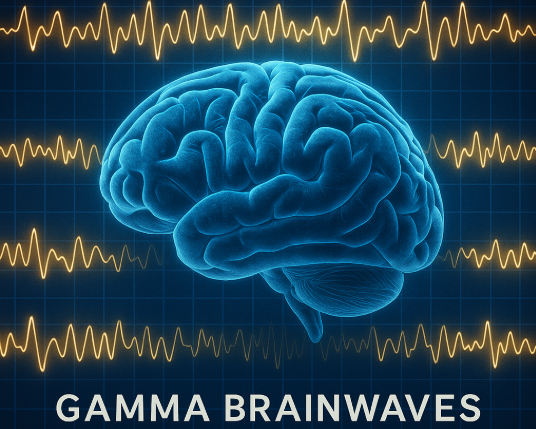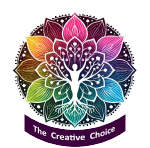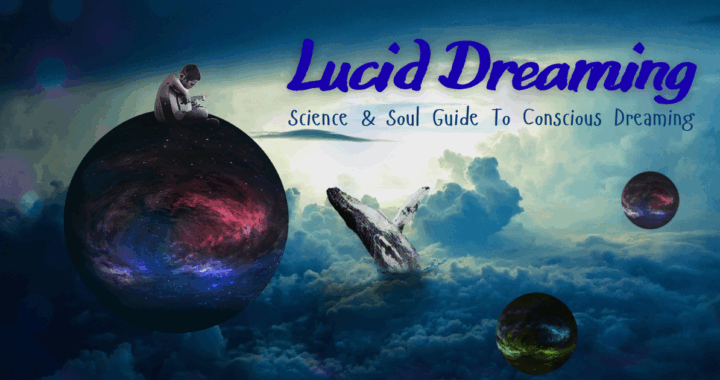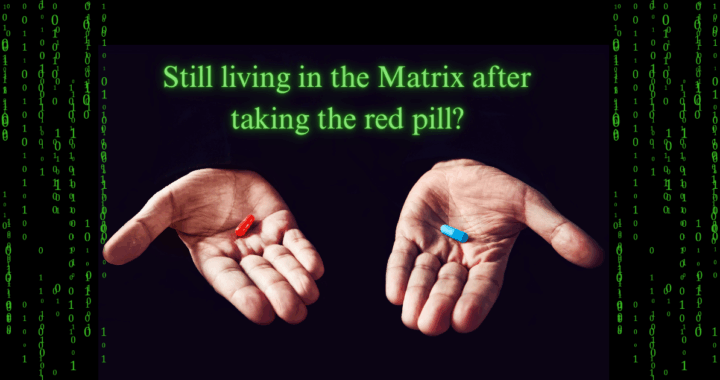Explore the neuroscience, therapeutic benefits and creativity boost of lucid dreaming – and discover how to begin your journey tonight.
Have you ever had a dream?
Not the Martin Luther King type – but maybe flying, walking into work, or wandering through a strange landscape when suddenly you thought, “Hang on… I’m dreaming!”
That moment of awareness is what we call lucid dreaming. It happens when, inside a dream, you realise the world around you isn’t real. That simple shift in awareness can open a door to a vast inner universe – one where you can explore, heal, create, or simply observe with wonder.
Popular culture has tapped into this mystery too. In the film Inception, characters navigate dream worlds layered within each other – dreams within dreams – raising questions about what’s real, and what’s not. While your lucid dreams may not involve city-bending action scenes, the core idea holds true: within dreams, anything is possible.
I have lucid dreams quite regularly and I love them, as it feels to me like the constraints of the 3D world are lifted, even for a short time. Although I’d really love to do the mind-bending or reality distortions that are seen in Inception and also Dr Strange. You see, the truth is everywhere even if cunningly disguised as popular culture!
Lucid dreaming isn’t just a party trick. It sits at the fascinating intersection of science and soul, offering insights into consciousness, creativity, emotional healing, and personal growth. Let’s dive deeper with research-backed insights, spiritual wisdom, and practical tools to begin your journey tonight.

What is lucid dreaming?
Lucid dreaming is the experience of becoming aware that you’re dreaming while still inside the dream. It was scientifically confirmed in the 1980s, when Stanford researcher, Stephen LaBerge, used controlled eye-movement signals to show that dreamers could intentionally respond to whispered instructions during REM sleep – demonstrating real-time lucidity. (See ref here.)
Today, researchers broadly agree: lucid dreaming occurs during REM sleep, when the prefrontal cortex activates alongside typical REM patterns. This creates a hybrid brain state – resting but aware. (See ref here.)
The science and soul of lucidity
1. A unique state of consciousness
Lucid dreaming is marked by a rise in gamma brainwaves (around 40 Hz), which are linked to focused attention and waking cognition. This suggests dreamers become metacognitively aware – literally “thinking about thinking” – within sleep. (See ref here.)
Brain scans show that lucid dreamers activate areas tied to reflection, planning and memory – including the dorsolateral prefrontal cortex, frontopolar cortex, and precuneus.⁴ In other words, lucid dreaming bridges sleep and wakefulness in a powerful and unusual way.

2. Healing nightmares and trauma
Lucid Dreaming Therapy (LDT) is used clinically to help people with recurring nightmares, PTSD, anxiety, and depression. Studies show that by becoming lucid in a nightmare, a person can rescript the story or simply stand back and observe it – often reducing fear and improving sleep quality. (See ref here.)
One study found that veterans with PTSD experienced fewer nightmares and greater emotional regulation after practising guided lucid dreaming techniques. (See ref here.)
3. Practising skills in your sleep
In one study, participants practised dart-throwing during lucid dreams. Their real-world performance improved significantly – a pattern also seen in dance, athletics and musical performance. (See ref here.)
A wider meta-analysis found that 21% of dreamers who practised physical skills during dreams reported meaningful improvements in waking life. While not a replacement for real-world training, the mind-body connection seems to extend into the dream world. (See ref here. )
4. A spark for creativity and insight
Dreams have long been known to unlock inspiration. Researcher, Deirdre Barrett, author of The Committee of Sleep, found that over half of students who dreamt about a problem gained valuable insights, and a third found complete solutions. (See ref here.)
Lucid dreaming can amplify this creative power. Writers, artists, and musicians have used lucid dreams to imagine stories, compose music, or visualise paintings. Some even report “bringing back” melodies, visuals or ideas directly from the dream.
5. Emotional well-being and memory
Lucid dreaming appears to enhance emotional integration and memory processing. It helps strengthen what researchers call emotional memory consolidation, often improving mood and clarity on waking. (See ref here.)
Dreamers who reflect regularly on their lucid experiences often report feeling calmer, more intuitive, and better able to navigate daily life.
How to start your lucid journey
Lucid dreaming is fun but it can be a little disconcerting the first time you try it and succeed. However, there are a few steps you can take to help you on your journey and to document your thoughts and feelings about it.
1. Keep a dream journal
Write down your dreams as soon as you wake. This boosts recall and helps you spot recurring dream themes – like flying, school corridors, or missing shoes.
2. Reality checks
Several times a day, ask: Am I dreaming?
Try pushing a finger through your palm or reading the same sentence twice – tricks that usually fail in dreams. This habit can carry into the dream state and spark awareness within the dream. A little like the spinning top in Inception.
3. Mnemonic Induction (MILD)
Repeat a phrase before sleep like, “Tonight, I will realise I’m dreaming.”
Visualise yourself becoming lucid in a recent dream. This primes your mind to catch the dream state in action.
4. Wake-Back-to-Bed (WBTB)
Set an alarm 5–6 hours into your sleep. Stay awake for 15–20 minutes, focus on your lucid intention, then go back to sleep. This method aligns with REM cycles and increases success rates. It is also one of the ways that people use to increase their chances of having an out-of-body-experience (OOBE).
5. Light/sound cues
Some dreamers use gentle flashing lights, tones, or vibrations synced to REM. Over time, these subtle cues appear inside dreams and help trigger lucidity.
6. Natural supports
Try mugwort, blue lotus, mugwort tea, binaural beats, or gentle yoga before bed. While results vary, these practices can deepen dream awareness and you may find that you prefer one method over another. The use of binaural beats is another way that people have been induced into OOBEs through research at the Monroe Institute. The Monroe Institute, located in Faber, Virginia. Founded by Robert Monroe, a pioneer in consciousness exploration, the institute has been studying OOBEs since the 1970s and is known for developing the Hemi-Sync® audio technology, which uses binaural beats to help induce altered states of awareness.
What to do inside a lucid dream
This is an exciting question and I’m sure you will all have your own thoughts and ideas about what you want to do. Once lucid, here are a few suggestions for things you can try:
- Fly or teleport – explore symbolic or fantastical dreamscapes
- Practise skills – rehearse a speech, a dance, or an instrument
- Face fears – gently approach challenging dream images
- Ask questions – try: “What is my soul trying to tell me?”
- Observe – simply watch the dream unfold without controlling it

Gentle reminders and cautions
While lucid dreaming is often described as empowering or therapeutic, there is some evidence that it can have downsides, especially for certain individuals or when practised excessively.
These include:
| Risk | Description |
| Sleep disruption | Techniques like wake-back-to-bed or reality checks can fragment sleep cycles |
| Lucid nightmares | Some dreamers report being aware but unable to escape frightening dream content |
| Dissociation or confusion | Blurred boundaries between dream and waking life may affect mental clarity |
| Fatigue and irritability | Poor sleep quality may lead to daytime tiredness and mood issues |
| Subclinical psychosis | A 2018 study linked frequent lucid dream induction to increased schizotypy symptoms |
| Addiction or escapism | Some individuals become overly reliant on lucid dreams to avoid real-life stress |
See The Mental Health Benefits and Downsides of Lucid Dreaming and The Hidden Dangers of Lucid Dreaming: What You Need to Know | Hypnothera.
Who might be more vulnerable?
- People with existing mental health conditions (e.g. anxiety, PTSD, psychosis)
- Those using intensive induction techniques without proper sleep hygiene
- Individuals prone to reality confusion or obsessive thinking
How to practice safely
- Use gentle techniques like dream journaling or mindful intention setting
- Avoid overuse of wake-back-to-bed or mnemonic induction if sleep quality suffers
- Take breaks if you feel mentally strained or emotionally overwhelmed
- Seek professional guidance if lucid dreaming begins to affect your waking life
Lucid dreaming isn’t inherently harmful — but like any altered state, it requires balance, awareness, and care. Remember:
- Don’t use dreams to escape real life – they offer insight, not avoidance
- Maintain a regular sleep schedule
- Ground yourself after strong dreams – hydrate, journal, or meditate
- Balance control with surrender – sometimes the best wisdom arrives when you stop steering

Tonight’s journal prompt
If I realise I’m dreaming tonight, I will ask: “What does my soul need me to see?”
When you wake, reflect on even the smallest clues – a colour, a feeling, a single word.
Finally, lucid dreaming bridges neuroscience and ancient wisdom. It invites us to wake within sleep, not by chance, but through conscious intention. Whether you’re drawn to it for healing, creativity, self-discovery, or curiosity, it’s one of the most accessible and meaningful tools for personal growth.
Sweet dreams – and may you find yourself awake in them.






This was such a fascinating read! I’ve heard bits and pieces about lucid dreaming over the years, but never in this much depth or with this balance between science and spirituality. The idea that we can consciously practice skills or heal emotional wounds while dreaming honestly blew my mind. I work as a counselor in mental health, and I can definitely see how this has some profound aspects to it, which would be very interesting and beneficial for me to explore further.
Personally, I’ve had maybe one or two experiences where I realized I was dreaming mid-dream, but I didn’t know how to stay in that state or do anything with it. I would imagine that’s pretty normal for beginners? Also, I’m curious. How long does it usually take to become lucid more consistently using techniques like journaling or MILD?
The bit about nightmares really resonated too. I’ve had recurring dreams that feel emotionally intense, and now I’m wondering if lucidity could help shift the tone or offer some closure.
I love the creativity angle too. I do a little bit of drawing, and I play music as well. The idea of being able to access the subconscious mind with that purpose sounds pretty mindblowing to me.
Thanks again for such an eye-opening article. Now, I’m definitely inspired to give dream journaling a real shot!
Hi Michael. Good to see you again and thanks for your kind and insightful comments once again. As I said in the post, I dream every night, sometimes 2 or 3 different dreams and I usually remember large parts of the dreams in the morning, so this is something very close to my heart and experience. I can’t really say a timeline for being able to dream lucidly but I would suggest to keep trying, keep setting your attention and following the system and sooner or later, you will find yourself lucid, even for a moment. Then it’s just a matter of practice. Sometimes I find it’s just a thought I have within the dream that tells me I’m lucid, because I’m able to stand back and detach from it for a moment, and then I usually get right back into it, with gusto!
Inspiration can definitely come through dreams so I’d set an intention for that too. You are always connected to your higher self, and dreams are just one way that you can start to strengthen the connection. All the best and, sweet lucid dreams! Gail
I bought a course a while back and one of the things that person taught you was to have a pen and paper or one of those little DVR recorders or whatever they’re called for when you have a question and can’t quite figure out a solution. This was a fitness book btw. He said that when you ask a question right before heading off to dreamland sometimes an answer just mysteriously pops up so need something to write or record this stuff down or you’ll just plain forget it.
I think that and you’re lucid dreaming are one in the same. What do you think?
Hi Jason. Thanks for your comment here.I think that your other course provider is correct and their recommendations and in line with what I’ve suggested here. Dreams are things that we don’t fully understand but they can definitely give us messages and insights. Having and setting an intention before you go to sleep is like bringing that ‘thing’ up your awareness list so it’s near to the top and your question can be answered. I think there is a slight difference between getting and answer in a dream and lucid dreaming because in lucid dreaming, you are aware that you are dreaming, whereas you can still be in a normal dream and receive answers like a metaphor or an analogy. Either way, they can both be useful and recording them when you wake using a pen or recording device is good practice. All the best in your nightly dreams. Gail